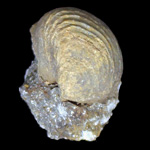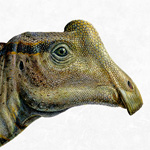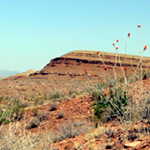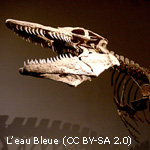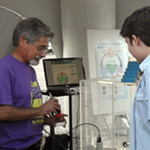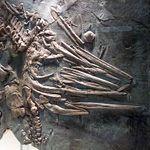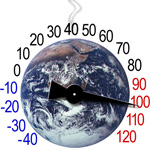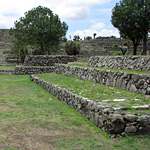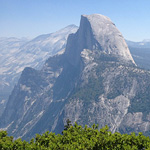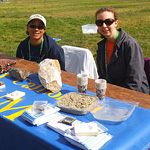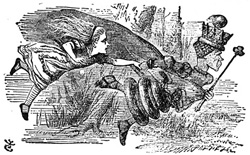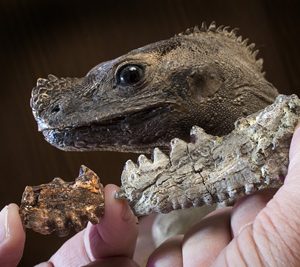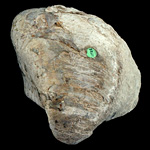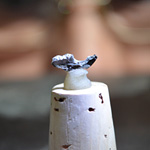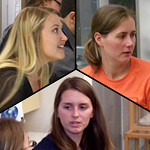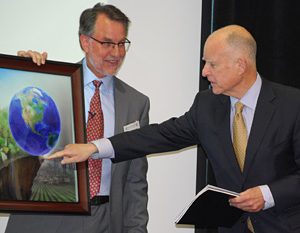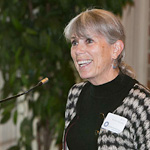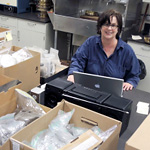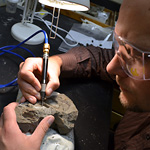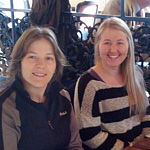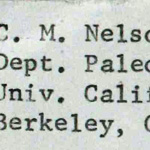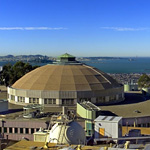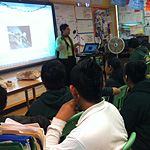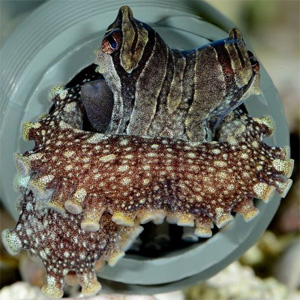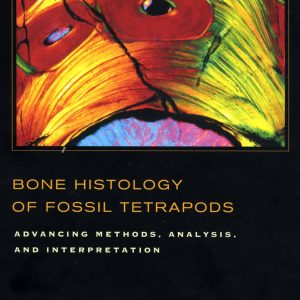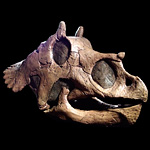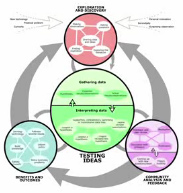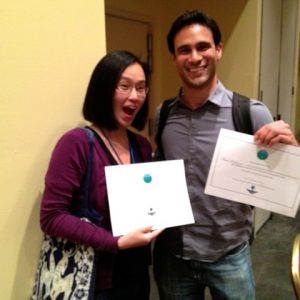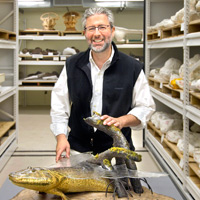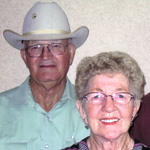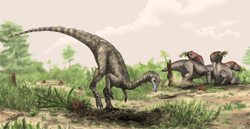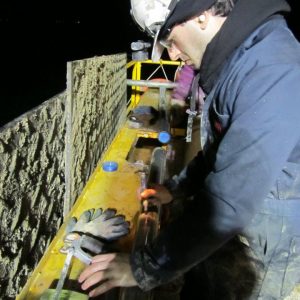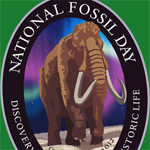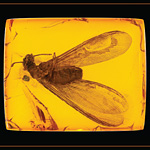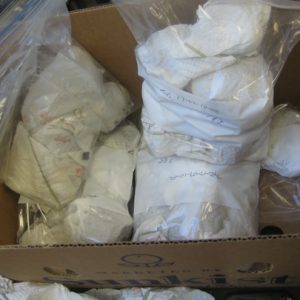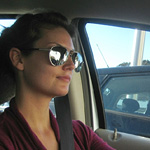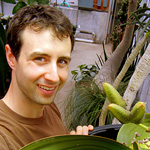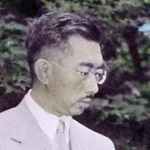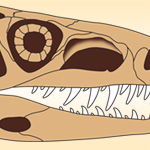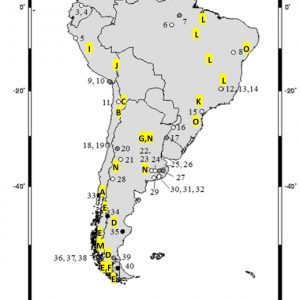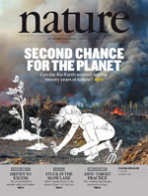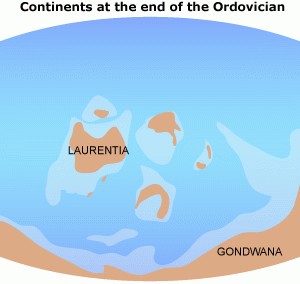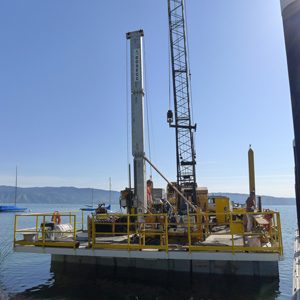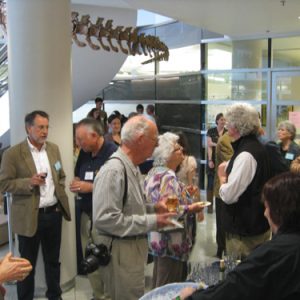Hundreds of specimens from the former USGS Menlo Park Collection, now housed in the UC Museum of Paleontology, were collected in the pioneering days of geological and paleontological exploration of California. This includes fossils collected by Charles A. White, Timothy W. Stanton, Joseph S. Diller and other legendary figures at the US Geological Survey. The newly founded Department of Paleontology at UC Berkeley also led numerous expeditions and excavations of vertebrates in California in the … [Read more...] about Encounters in the field: UCMP and the US Geological Survey
Werning co-authors paper on growth in Parasaurolophus
Recent Ph.D. grad Sarah Werning, now in a postdoctoral position at the State University of New York at Stony Brook, was a major contributor to a paper released today on ontogeny in Parasaurolophus, a Cretaceous hadrosaurid dinosaur notable for the hollow, bony tube on its skull. The study centers around a remarkable skeleton of a baby Parasaurolophus (nicknamed "Joe") discovered in 2009 by Kevin Terris, a student at The Webb Schools in Claremont, California, in exposures of the … [Read more...] about Werning co-authors paper on growth in Parasaurolophus
UCMP hosts phylogenies and fossils workshop
On September 23-25, 2013, the UCMP hosted a workshop on Integrating Molecular Phylogenies and the Fossil Record supported by the France-Berkeley Fund. Led by UCMP Director Charles Marshall and Hélène Morlon from École Polytechnique in France, the workshop brought together leading researchers who are developing methods for inferring diversity dynamics using molecular phylogenies or fossil data. The gathering of approximately 25 people included UC Berkeley faculty and UCMP graduate students and … [Read more...] about UCMP hosts phylogenies and fossils workshop
A trip to New Mexico
Why New Mexico? Like someone else put it "it ain't new and it sure ain't Mexico!" So why make the trek? To attend the Carboniferous-Permian Transition Meeting! Five members of the Looy Lab piled into a van and drove all the way from Berkeley to Albuquerque. With the enormous number of meetings and conferences being organized, why did we decide to go to this particular one? I think there is a checklist that most people go over before they decide on which conference to attend. In random … [Read more...] about A trip to New Mexico
A whale of a find
The upper Miocene-Pliocene Purisima Formation near Capitola, California, is well known among avid fossil collectors and popular with beachcombers. While this seaside shallow marine deposit contains rich assemblages of clams, snails and other invertebrates, fossil vertebrates such as whales, fishes, and birds are the most prized. Happily this is a case in which amateurs and scientists have often partnered to exchange fossils and report findings. Fossil hunters Frank Perry, Stan Jarocki, and … [Read more...] about A whale of a find
Understanding Science is now in Portuguese
Você fala português? If so, you’ll be pleased to learn about Understanding Science’s new Portuguese translation, led by Unversidade de Lisboa Principal Researcher Nuno P. Barradas and his team. Nuno and colleagues recently promoted Understanding Science in Portuguese at a community science event in the town of Estremoz, east of Lisbon. Science on the Streets was organized by Portugal’s national agency for public awareness of science, Ciência Viva ("Living Science"), and the Understanding … [Read more...] about Understanding Science is now in Portuguese
Cataloging the archives: Paleontology specimen exchange
How do natural history museums build their collections? The UCMP's fossil collection is largely a product of decades of field work by past and present researchers. As the State's fossil repository, the museum also receives a large number of fossil finds from construction sites in California (for example, the Caldecott Tunnel). Another, perhaps less appreciated means of acquiring scientifically valuable specimens, is specimen exchange between institutions — it's a bit like a holiday gift exchange … [Read more...] about Cataloging the archives: Paleontology specimen exchange
Barnosky interviewed about climate change
Tony Barnosky, UCMP Curator and Professor of Integrative Biology, discussed a consensus statement to world leaders regarding global change, Maintaining Humanity's Life Support Systems in the 21st Century, this past week in an interview by KQED Science Editor Craig Miller. Barnosky has been working with the California Office of the Governor to promote science-based solutions to global change problems. With 15 other global change scientists he developed the scientific consensus statement, which … [Read more...] about Barnosky interviewed about climate change
Pollen may help solve the mystery of why a pre-Columbian city in Mexico was abandoned
My research focuses on the Holocene geological time period, the last 10,000 years of Earth history. An accurate picture of past climate can help us understand the relationship between past environmental change and ancient societies. In this post, I describe how my summer fieldwork and my broader dissertation project link summer rainfall, microscopic grains of pollen, and an ancient city in Mexico. The pre-Columbian city of Cantona is an impressive sight, even today. Located near the border of … [Read more...] about Pollen may help solve the mystery of why a pre-Columbian city in Mexico was abandoned
Engaging the next generation of geoscientists
Most Earth scientists have vivid memories of their first geological field trip, but how many can say their first experience was as a high school student on a trip led by 15 professors, professional scientists, and college students? Thirty lucky students from the Bay Area, El Paso, and New Orleans were selected to participate in a ten-day, geology-of-California field trip that started along the San Andreas Fault at Pt. Reyes National Seashore and ended at Yosemite National Park. Led by UCMP … [Read more...] about Engaging the next generation of geoscientists
Fossil bridging with the Girl Scouts
What Bay Area event brings together 5,000 eager girls, 50 exhibitors and a walk across the Golden Gate Bridge? Girl Scout Bridging! On Saturday, May 11, Lisa White, UCMP Director of Education and Public Programs, and Erica Clites, Museum Scientist, attended the annual Girl Scout event at Crissy Field in the Presidio of San Francisco. The Bridging is a symbolic event recognizing the transition from the Junior level of Girl Scouting to Cadette, and the girls — representing troops throughout … [Read more...] about Fossil bridging with the Girl Scouts
Marshall shows terrestrial mammal extinction due to Red Queen with new work published in Science
By studying 19 groups of Cenozoic mammals Charles Marshall and Tiago Quental tested and confirmed the Red Queen hypothesis. Red Queen is the hypothesis that states that groups must continue to adapt and evolve in response to their environments in order to survive. It's not just extinction events that threaten groups--it's also low rates of origination of new species. The new research (published in Science) shows that these mammal groups have experienced diversity declines in part due to their … [Read more...] about Marshall shows terrestrial mammal extinction due to Red Queen with new work published in Science
Warmer climates can lead to big lizards
Pat Holroyd and co-authors describe a new species of giant lizard in the latest issue of Proceedings of the Royal Society B. The fossil jaw bones of this lizard have been in the UCMP collection since the 1970s, but it took a while for them to be recognized as something special. The specimens are from an herbivorous lizard that lived in the warm climate of Asia 40 million years ago. Dubbed Barbaturex morrisoni, this lizard was much bigger than the largest herbivorous lizards alive today. The … [Read more...] about Warmer climates can lead to big lizards
Reports from Regatta: T.W. Stanton, prominent contributor to the USGS Invertebrate Collection
In the orphaned U.S. Geological Survey’s (USGS) Menlo Park Invertebrate Collection, now housed in the UC Museum of Paleontology’s off-campus collections space in the Regatta Building, the work of prominent USGS collectors stands out. One of these dedicated and proficient invertebrate paleontologists was Timothy William Stanton, who amassed collections from over 100 localities, authored monographic research papers, and wrote more than 600 technical reports evaluating the age of collected … [Read more...] about Reports from Regatta: T.W. Stanton, prominent contributor to the USGS Invertebrate Collection
Small discoveries from the Caldecott Tunnel Project
Some of the most interesting fossils a paleontologist can find in the field are not necessarily the biggest. During construction of the fourth bore of the Caldecott Tunnel, scientists working with the California Department of Transportation (CalTrans) collected micro-vertebrate fossils, including teeth, jaws and even toes of small animals such as rodents and amphibians. Sediment thought to contain potential fossils was washed through mesh screens, and the remaining material was carefully … [Read more...] about Small discoveries from the Caldecott Tunnel Project
Werning blogs at PLOS about the fossils of the Sierra Nevada
In her latest post over at the Public Library of Science blog The Integrative Paleontologists Sarah Werning writes about about what the fossil history of California can teach us about climate change. UCMP is teaming up with other Berkeley natural history museums on the Berkeley Initiative in Global Change Biology to strive for a comprehensive picture of the effects of climate change on past, present, and future life. Read Sarah's post here. … [Read more...] about Werning blogs at PLOS about the fossils of the Sierra Nevada
UCMP students honored with 2013 Paleontological Society Student Grants Awards
Dori Contreras (Looy Lab), Renske Kirchholtes (Looy Lab), and Allison Stegner (Barnosky Lab) will each receive awards from The Paleontological Society to support their research. Each year the Society grants Mid-America Paleontology Society (MAPS) Outstanding Research Awards to the top three student proposals received and honors a student with the G. Arthur Cooper Award for student research. Dori Contreras will receive a MAPS Outstanding Student Research Award to support her research titled: … [Read more...] about UCMP students honored with 2013 Paleontological Society Student Grants Awards
Barnosky presents statement on global environmental problems to Governor Brown
When California governor Jerry Brown challenged scientists to put global change issues into terms that political leaders can understand UCMP's Tony Barnosky stepped up. On May 23 Barnosky and colleagues presented a 30-page statement entitled Maintaining Humanity’s Life Support Systems in the 21st Century to the governor. It's a strong statement about global environmental problems and what people must do to insure the future health of the planet with signatories from 44 countries including two … [Read more...] about Barnosky presents statement on global environmental problems to Governor Brown
Another feather in Judy Scotchmoor’s cap
Our very own Judy Scotchmoor, Co-Director of Education and Outreach at the UCMP, received the 2013 Chancellor's Award for Public Service. The award honors outstanding public service by UC Berkeley undergraduates, graduate students, faculty, and staff. The Civic Engagement Award received by Judy is, in part, for her exceptional ability to develop, nurture, and leverage collaborative partnerships and resources to better engage the public with exciting and accessible science. In a public ceremony … [Read more...] about Another feather in Judy Scotchmoor’s cap
Finding forams in the Caldecott Tunnel
Day after day, over the course of two years, the massive tunnel borer worked its way through the sedimentary rock layers of the Berkeley Hills during the construction of the fourth bore of the Caldecott Tunnel, grinding up the rocks in the process into fist-size pieces that were later deposited outside the entrance of the tunnel. At the end of each work day, paleontologists sifted through these piles, referred to as the day’s "spoils." They were not only on the lookout for fossils of plants and … [Read more...] about Finding forams in the Caldecott Tunnel
Prepping the fossils from the Caldecott Tunnel
For the last semester I have been lucky enough to work as the GSR (graduate student researcher) for the spring semester at the UC Museum of Paleontology fossil preparation lab (prep lab) under the supervision of our new lab manager, Jason Carr. It has been fun getting back into the preparation role, something that I did as a job after college. The material we have to work on varies a lot which keeps the work interesting. It requires a variety of techniques, so I get to do something different … [Read more...] about Prepping the fossils from the Caldecott Tunnel
The Looy Lab paleo detectives: Dori and Cindy at the NMNH
Tuesday morning, February 12, 2013, Dori Contreras and Cindy Looy woke before dawn to catch a cross-country flight to Washington, DC, for a two-week visit to the Smithsonian’s National Museum of Natural History (NMNH). Originally, Cindy was going to attend a biannual workshop of the Evolution of Terrestrial Ecosystem Program. However, after Dori obtained a Sigma Xi grant to study a fossil leaf collection housed in the NMNH’s paleobotanical collections, they teamed up and turned it into a joint … [Read more...] about The Looy Lab paleo detectives: Dori and Cindy at the NMNH
Reports from Regatta: Two Cal Alumni and the USGS Menlo Park Collection
As undergraduate work-study students recataloging the United States Geological Survery (USGS) Menlo Park Invertebrate collection at the UCMP, we've come across the names Nelson and Addicott time and time again in extensive database entries or on the original, yellowing locality cards paired with each specimen. The names of the paleontologists and geologists responsible for collecting these fossils in the Menlo Park collection are largely unknown to us, but found immersed within the aging drawers … [Read more...] about Reports from Regatta: Two Cal Alumni and the USGS Menlo Park Collection
The Looy Lab paleo detectives
Solving the mysteries of the past and present one rock at a time East of the Berkeley campus, we see the beautiful, green Berkeley Hills, the golden letter "C" and a somewhat classy-looking, dome-shaped building on the Lawrence Berkeley National Laboratory campus. This houses the ALS, or Advanced Light Source. Personally, I find the name a bit silly because it doesn't seem to capture the awesomeness of this giant machine. It's like calling the Space Shuttle a Progressive Flying Tool. The ALS … [Read more...] about The Looy Lab paleo detectives
Darwin Day Roadshow
It is not unusual to see evolutionary biologists around the world involved in celebration activities on February 12th — the reason? Charles Darwin's birthday! UCMP and the National Evolutionary Synthesis Center (NESCent) are no exception and this year the activities overlapped. Two years ago, NESCent initiated the Darwin Day Roadshow in order to bring evolutionary science to schools and museums around the country. This year, Lisa White was asked by NESCent to bring the Roadshow to Urban … [Read more...] about Darwin Day Roadshow
Caldwell’s rare octopus research makes headlines
Roy Caldwell has been working with Richard Ross of the California Academy of Sciences to study a rare, beautiful, and so far unnamed species of octopus. Their work, along with some of Roy's photos, is the subject of a feature article in the San Francisco Chronicle. … [Read more...] about Caldwell’s rare octopus research makes headlines
New bone histology book from UCMP and UC Press
The University of California Press has just published Bone Histology of Fossil Tetrapods: Advancing methods, analysis, and interpretation. The book represents the proceedings of an NSF-sponsored workshop and is the first comprehensive summary of the field of fossil bone histology. The twelve authors of the various chapters cover topics ranging from basic bone biology to calculating and analyzing the evolution of growth rates in bones, in addition to step-by-step instructions for setting up a … [Read more...] about New bone histology book from UCMP and UC Press
Cataloging the Archives: Three Fine Trikes
Another in a series of blog posts relating to the museum's "cataloging the archives" project Ask children what their favorite dinosaurs are, and it's almost guaranteed that Triceratops (refer to them by their nickname, Trikes, and you'll earn tons of street cred) will be on the list. The three-horned, frilled wonder is one of the most recognizable creatures of the Cretaceous. Many a visitor has walked by the Triceratops display here in the Valley Life Sciences Building's Marian Koshland … [Read more...] about Cataloging the Archives: Three Fine Trikes
Understanding Science in the video spotlight
The California Academy of Sciences produced a video that uses UCMP's Understanding Science website's How Science Works flowchart to map the discovery of a new spider family. UCMP Education and Public Programs team leaders Judy Scotchmoor and Lisa White have starring roles! Watch the video at Science360. … [Read more...] about Understanding Science in the video spotlight
Lucy Chang captures honors at the International Biogeography Society meeting
UCMP grad student, Lucy Chang, received recognition for her student poster at the recent International Biogeography Society meeting in Miami. She was one of two winners in the category of Conservation and Global Change. There were more than 300 student posters dispersed among four categories and only two winners in each category. Lucy’s poster focused on the use of the fossil record to understand how biotas are established in epeiric (epicontinental) seas. See abstract below. Abstract: … [Read more...] about Lucy Chang captures honors at the International Biogeography Society meeting
An evening with Neil Shubin
UCMP has partnered with the Jewish Community Center of San Francisco's Arts & Ideas series to present a lecture by Neil Shubin on Wednesday, January 16. Paleontologist and evolutionary biologist Neil Shubin is famed for discovering the fossilized Tiktaalik roseae, the missing link between ancient sea creatures and land dwellers. His bestselling book, Your Inner Fish, shows parallels between human anatomy and the structures of the fish that first wriggled landward 375 million years ago. In … [Read more...] about An evening with Neil Shubin
A salute to the Engdahl family
The Morris Skinner Award is the Society of Vertebrate Paleontology’s way of honoring those who have added to our knowledge through their contributions to collection of scientifically significant fossils. At its annual meeting in Raleigh, North Carolina, the society honored the Engdahl family of Garfield County, Montana, for their long-term, multi-generational support of paleontological research and education. Students, staff, and faculty associated with UCMP have benefited greatly from the … [Read more...] about A salute to the Engdahl family
Werning in Biology Letters with oldest dinosaur
Nyasasaurus parringtoni is the new name for a very old fossil — a small dinosaur that lived 10 million years before any other known species. UCMP's Sarah Werning co-authored the Biology Letters paper describing the animal and did bone analysis on the specimen. The Nyasasaurus fossil that Sarah and her co-authors studied was collected in Tanzania in the 1930s but was not described and documented for 80 years. The find pushes the origin of dinosaurs back to the middle of the Triassic … [Read more...] about Werning in Biology Letters with oldest dinosaur
Dispatches from Clear Lake, part 2
UCMP's Cindy Looy is leading a project to collect 130,000 years worth of sediment data from Clear Lake in order to better understand how life has adapted to climate change. Along the way, members of her team reported back to us with all the progress and drama from the field. Read part 1 here. From UCB undergrad research assistant Robert Stevenson: Fri 4/27-Sat 4/28 Night Shift First night shift was tough. Even with the nap I took to prep for the difference in sleeping schedule, … [Read more...] about Dispatches from Clear Lake, part 2
UCMP welcomes Erica Clites to lead our NSF-funded collections improvement grant
Erica Clites has accepted a Museum Scientist position at UCMP to lead the NSF-funded collections improvement grant to rehouse and digitally image the USGS Menlo Park collection housed at the Regatta facility. Erica has an outstanding record, with a Bachelor's in Geology from The College of Wooster and a M.S. in Geological Sciences from UC Riverside, having completed a study on the Ediacaran fauna under Mary Droser. She also has extensive experience with the National Park Service, including an … [Read more...] about UCMP welcomes Erica Clites to lead our NSF-funded collections improvement grant
Finding fossils in our national parks
In celebration of National Fossil Day (October 17, 2012), an event first organized by the National Parks Service (NPS) two years ago, we would like to call your attention to a feature on The Paleontology Portal website: "Fossils in US National Parks." First announced in January of this year (see the January 2012 UCMP News), the module's interactive map enables one to see all the parks where fossils are present and to find out what fossils (along with their geologic ages) are in any particular … [Read more...] about Finding fossils in our national parks
Announcing UCMP’s 2013 Fossil Treasures Calendar
Twelve elegant examples of archival richness Open any drawer in the UCMP collections and you will view an assortment of clues to the past. Each labeled object provides a "what, where, and when" and thus helps to portray slices of past biodiversity on different spatial and temporal scales. But these fossil treasures are, by themselves, only a small piece of the story and represent only a small part of the role of a natural history museum. It is when you add in the field notes, the correspondence … [Read more...] about Announcing UCMP’s 2013 Fossil Treasures Calendar
UCMP receives a grant to develop Understanding Global Change
The University of California Museum of Paleontology and the National Center for Science Education are undertaking a new project that ultimately will enhance 21st Century science literacy in the context of the causes and consequences of global change. The need: Although scientists are in agreement that significant changes (including climate change) are occurring on a global level, the public remains confused and often views statements of change with ill-founded skepticism and in some instances … [Read more...] about UCMP receives a grant to develop Understanding Global Change
The Arrival of the Fossils
The UCMP houses one of the largest fossil collections associated with a university in the world, so it is no wonder that some of the fossils need to be stored off-campus at the UC Regatta facility, located nearby in Richmond. This large warehouse is home to multiple campus-wide museum collections, including a variety of enormous whale skulls, huge ichthyosaur skeletons, and cyclopean bones of mammoths and dinosaurs from the Museum of Paleontology. The Regatta facility is also the current … [Read more...] about The Arrival of the Fossils
UCMP receives $401,833 to develop a program to increase understanding of evolutionary trees
UCMP, in partnership with the Museum of the Earth, the University of Kansas Natural History Museum, and the Yale Peabody Museum of Natural History, has received a National Leadership Grant from the Institute of Museum and Library Sciences: The Tree Room: Teaching and learning about evolutionary relationships This three-year project will result in a freely accessible online resource for science educators and ISI professionals – The Tree Room. Building on scientific expertise, the learning … [Read more...] about UCMP receives $401,833 to develop a program to increase understanding of evolutionary trees
Fossil neighbors
About once a month, I drive from Berkeley to Walnut Creek to pick up specimens for my thesis (dead birds for a study of the evolution of development in Aves), which necessitates a pass through the Caldecott Tunnel. Each time, I heave a sigh and try to shore up my patience as traffic before the tunnels slows to a stop. However, this bane has recently metamorphosed into an object of great interest, for it has come to my attention that the construction here is also uncovering of one of Earth’s most … [Read more...] about Fossil neighbors
Plants have a lot to tell us about the past …
Jeff Benca is a welcome addition to the Department of Integrative Biology and UCMP’s highly active paleobotany group as a member of Cindy Looy’s lab. However, Jeff also spends a lot of his time “up the hill” at the UC Botanical Garden, where he has been given space for his astonishing collection of lycopods that he brought with him from his days at the University of Washington. This ancient vascular plant group (along with rare carnivorous plants and orchids) actually caught his interest while … [Read more...] about Plants have a lot to tell us about the past …
Cataloging the archives: Chaney, the Emperor and Metasequoia
Another in a series of blog posts relating to the museum's "cataloging the archives" project The UCMP archives contain five large scrapbooks containing museum-related newspaper clippings dating from 1948 to 1989. The earliest clippings in the oldest scrapbook concern UCMP paleobotanist Ralph Chaney's 1948 trip to central China to see for himself, Metasequoia, a tree thought to have been extinct since the Miocene. The existence of this living fossil had just been publicized in a paper by Hu and … [Read more...] about Cataloging the archives: Chaney, the Emperor and Metasequoia
Archosaurs: A new online exhibit
UCMP is proud to announce the completion of its web exhibit on archosaurs — I guess you could call it a Diapsida exhibit but we've chosen to focus on the archosaur lineage. It's roots go back to the end of the spring semester, 2006. Former UCMP grad student John Hutchinson (Ph.D., 2001, now a Professor of Evolutionary Biomechanics at the University of London's Royal Veterinary College) had updated a number of the museum's web pages on dinosaurs, and he was asked whom he'd recommend for … [Read more...] about Archosaurs: A new online exhibit
A collaborative grant to examine what triggers megafauna extinction
Tony Barnosky, with Charles Marshall as co_PI, has received an NSF grant that will support a highly collaborative research program to test the synergistic effects of climate change and human population growth in magnifying extinction intensity. South America offers a natural site to test these effects. Barnosky and graduate students Emily Lindsey and Natalia Villavicencio hypothesize that if human impacts were significant in causing extinctions, then the last records for taxa should be found … [Read more...] about A collaborative grant to examine what triggers megafauna extinction
Barnosky on Earth’s tipping points in Nature
Twenty-two scientists including lead author Tony Barnosky urge us to understand the danger of global environmental tipping points in their review paper in the June 7 issue of Nature. They examine data from past global environmental changes, compare it to how humans are changing the planet today, and discuss what that could mean for our future. They conclude that if we continue at our current rates of environmental destruction and resource use there will be dramatic impacts on the quality of life … [Read more...] about Barnosky on Earth’s tipping points in Nature
Accolades continue for UCMP websites
The UCMP websites continue to rack up recognition and serve users around the world. Here's a taste of the latest website news: Understanding Evolution has been recognized as a key teaching resource in a recent NAS publication, Thinking Evolutionarily: Evolution Education Across the Life Sciences: Summary of a Convocation that was organized by a committee under the aegis of the Board on Life Sciences of the National Research Council (NRC) and the National Academy of Sciences (NAS) and held on … [Read more...] about Accolades continue for UCMP websites
Lessons for today in ancient mass extinctions
This month's Evo in the News on Understanding Evolution looks at the work of incoming UCMP faculty curator Seth Finnegan. Seth is the lead author on a paper published in Proceedings of the National Academy of Sciences showing that the end of the Ordovician marked a true mass extinction caused by habitat loss due to falling sea levels and cooling of the tropical oceans. The Evo in the News feature explains and discusses the significance of this research, and includes additional links, resources, … [Read more...] about Lessons for today in ancient mass extinctions
Dispatches from Clear Lake, part 1
UCMP's Cindy Looy is leading a project to collect 130,000 years worth of sediment data from Clear Lake in order to better understand how life has adapted to climate change. Along the way, members of her team will report back to us with all the progress and drama from the field. Here's our first set of dispatches. From Ivo Duijnstee: Thu, April 26 First mud It has begun. Except for some minor delays, the Clear Lake drilling expedition had a relatively smooth start. When our … [Read more...] about Dispatches from Clear Lake, part 1
A special night at UCMP
Cal Day is the one day of the year when lucky members of the public can tour UCMP's collection. But this year, on the night before Cal Day, UCMP hosted a special event to take some of our closest friends behind the scenes. This invitation-only event included sneak previews of Cal Day exhibits, tours of the collection, the paleo art of William Gordan Huff, and fossils recovered during the construction of the Caldecott Tunnel's fourth bore. UCMP-affiliated faculty curators, scientists, … [Read more...] about A special night at UCMP
